
Buff Tip Moth Caterpillar Stock Photo Alamy
A fairly large moth with rounded wings, with two wavy lines crossing the upper surface of the otherwise plain forewings. Male moths are orangey-brown while the larger females are more of a grey colour. Males have long, feathery antennae. In early summer, young fox moth caterpillars are black with orange bands.
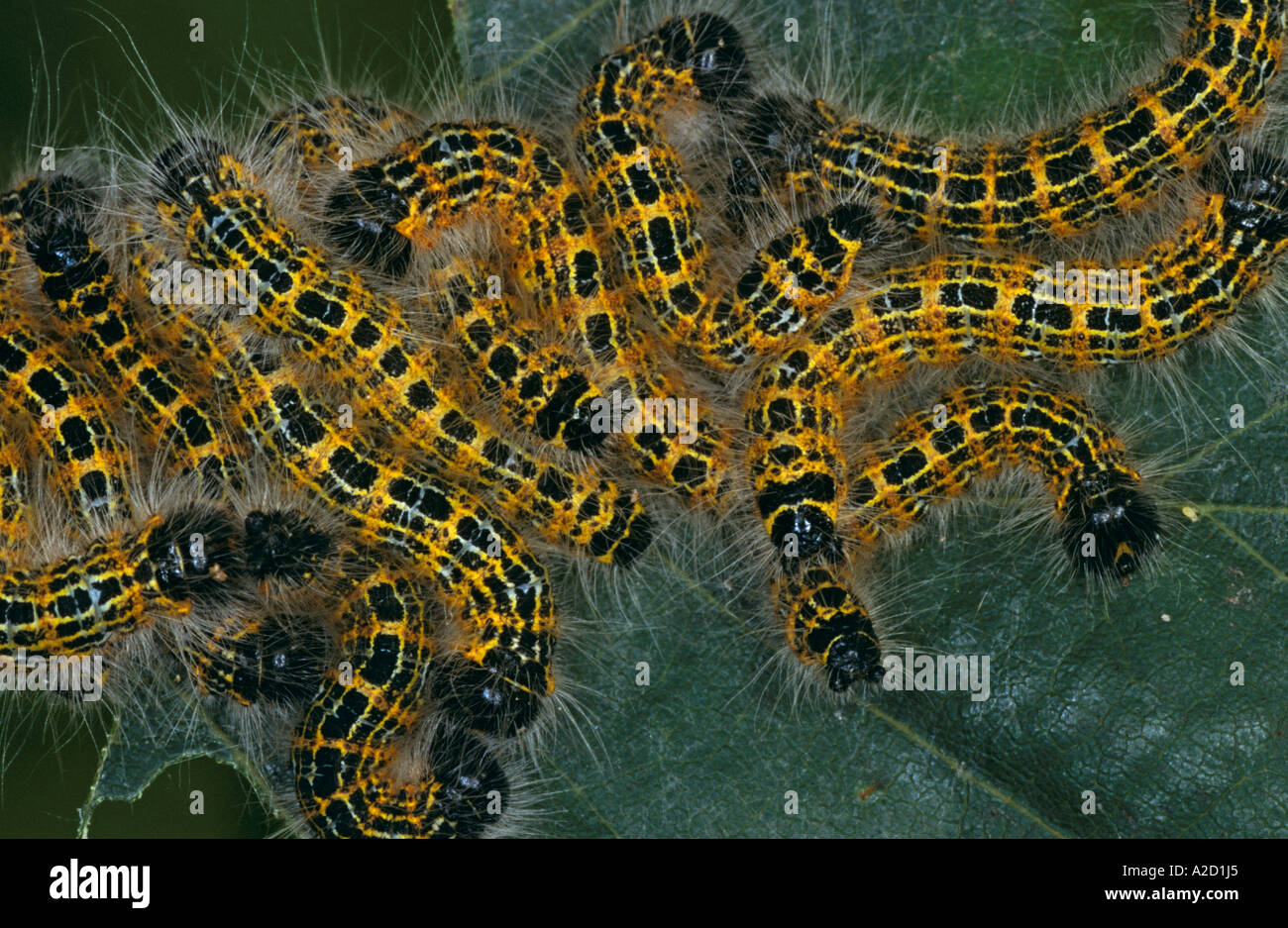
Buff tip Moth Phalera bucephala caterpillars Lincolnshire UK Stock Photo Alamy
Hairy caterpillars in the UK. It is important not to confuse this species with other, similar hairy caterpillars. The long white hairs and black head of oak processionary caterpillars look similar to those of the harmless buff-tip moth (Phalera bucephala).Buff-tip caterpillars can be distinguished by a yellowish background, and a pattern of square or rectangular black spots on the back.
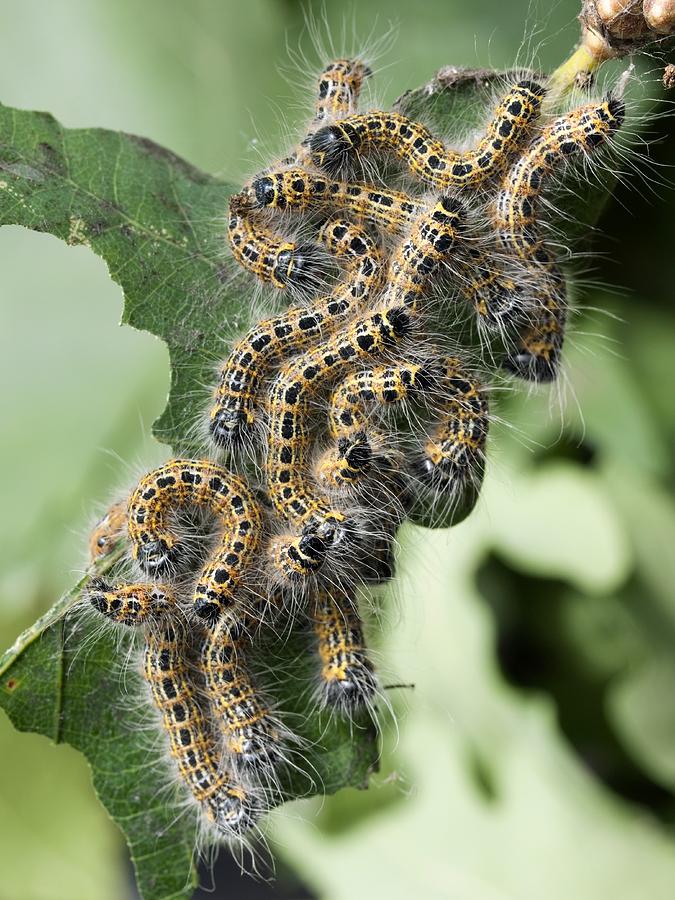
Bufftip Moth Caterpillars Photograph by Dr Jeremy Burgess Pixels
Scientific name: Phalera bucephala Size: Wingspan up to 66mm Distribution: Commonly found throughout the UK Months seen: May to August Habitat: Woods, parks and gardens Food: The caterpillars feed on many types of deciduous trees including lime, oak and elm Special features: The buff tip moth gets its name from the buff coloured wing tips.The main areas of the wings are covered with silvery.
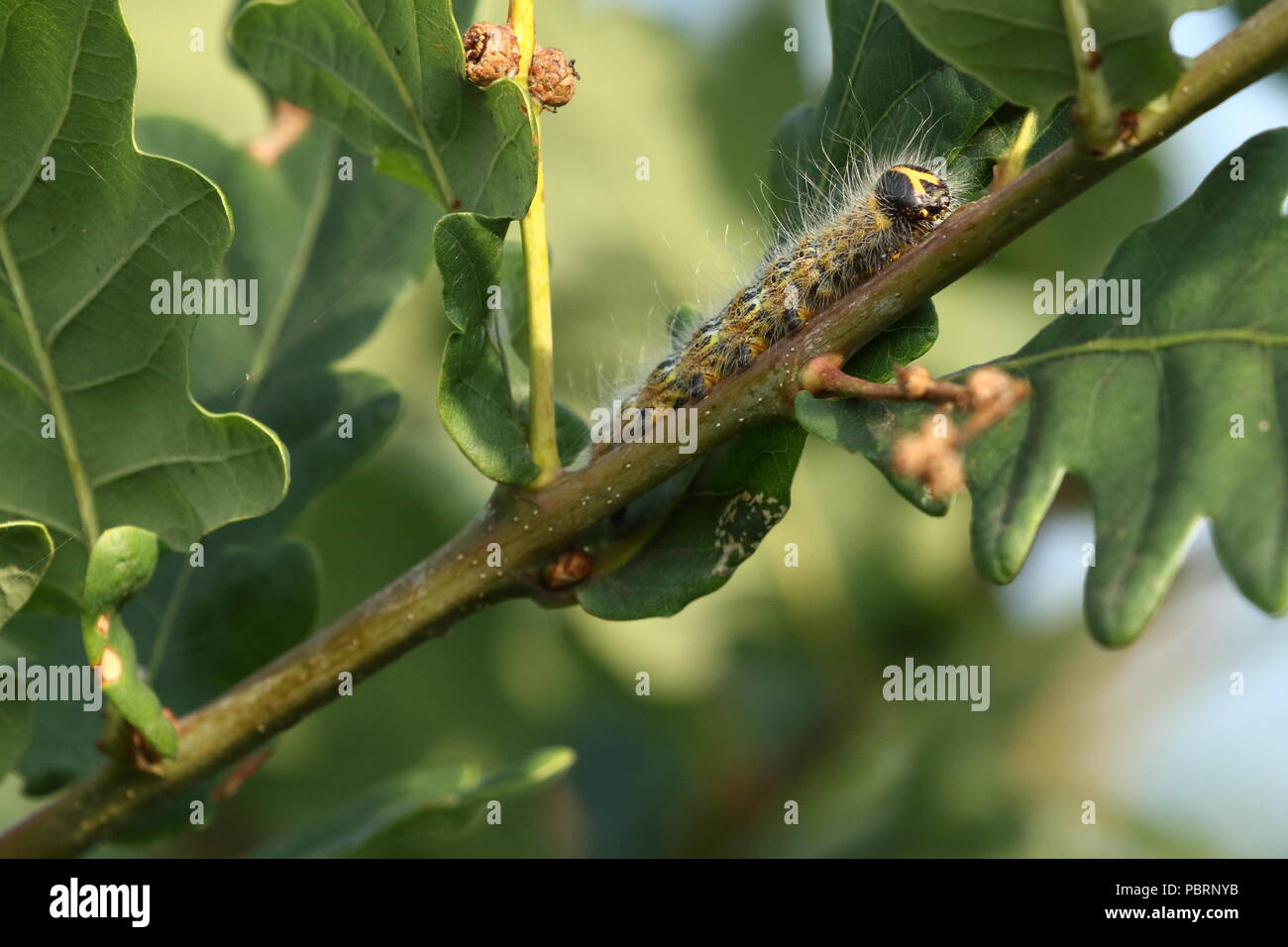
Buff tip moth caterpillar, Phalera bucephala, feeding on an oak tree leaf in Cornwall; UK Stock
Buff-tip Scientific classification; Domain: Eukaryota: Kingdom: Animalia: Phylum:. The buff-tip (Phalera bucephala) is a moth of the family Notodontidae. It is found throughout Europe and in Asia to eastern Siberia. The species was first described by Carl Linnaeus in his 1758 10th edition of. Caterpillar. Adult in profile. Adult back.

Bufftip moth caterpillars, Poole Dorset Butterflies
Yellow and black patterned caterpillars with grey/white hairs. Caterpillars can grow up to 50mm in length and are found in late summer into autumn. Buff-tip caterpillars do not produce nests but do live socially when young, Buff-tip adult flight season is mainly June-July, and females lay eggs in clusters on the underside of host leaves, with.

Buff tip moth caterpillar, UK Stock Image C041/7832 Science Photo Library
Buff-tip moth caterpillars.Photo: Mark Wright. Mark was pleased to learn that these caterpillars he found in his Poole garden are of the Buff-tip moth. That's the one that looks exactly like a broken birch twig, or some even suggest a cigarette butt.. Help us raise funds for butterflies and moths; The State of the UK's Butterflies.
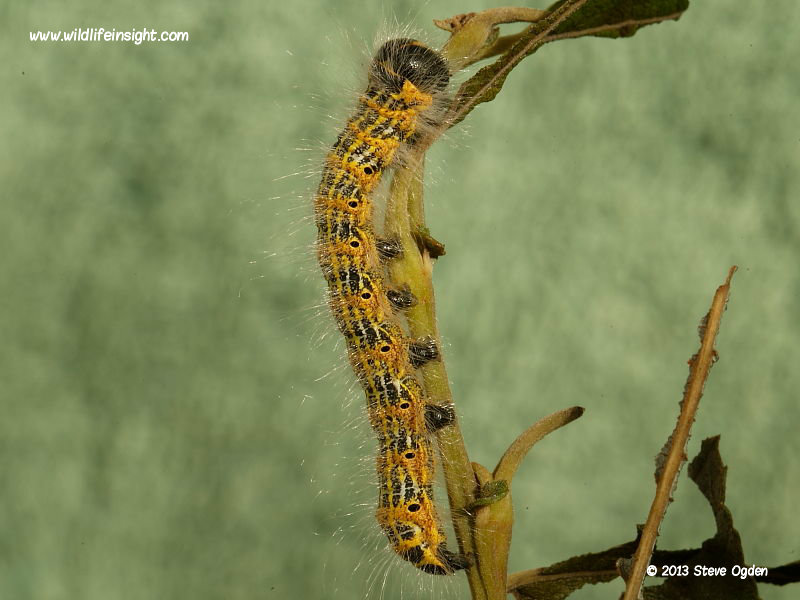
Bufftip Moth and caterpillar (Phalera bucephala)
About. Blink and you may miss the buff-tip moth, which blends in perfectly with its surroundings, looking just like the twig of a birch tree. A night-flying moth, this amazing creature can be seen between May and July. The caterpillars are big, hairy and yellow with a black head and a ring of short black stripes and often gather together in.

Buff Tip Moth Caterpillars; Phalera bucephala; on Willow; UK Stock Photo Alamy
The Wildlife Trusts. The Wildlife Trusts: Protecting for the Future. Registered charity number 207238 Regulated by the Fundraising Regulator. Read our fundraising promise. A very rare species, this moth is now limited to one site in the UK. Males can be a striking reddish buff in colour.

Buff Tip Moth Caterpillar (Phalera bucephala) in the uk Stock Photo Alamy
The Buff-tip caterpillar is easily recognised from other species found in the British Isles. The fully grown caterpillar is up to 75mm in length and has a distinctive trellised yellow and black patterning with a covering of fine pale hairs. The face is black with an inverted yellow V. Identification of early instar caterpillars is also possible.
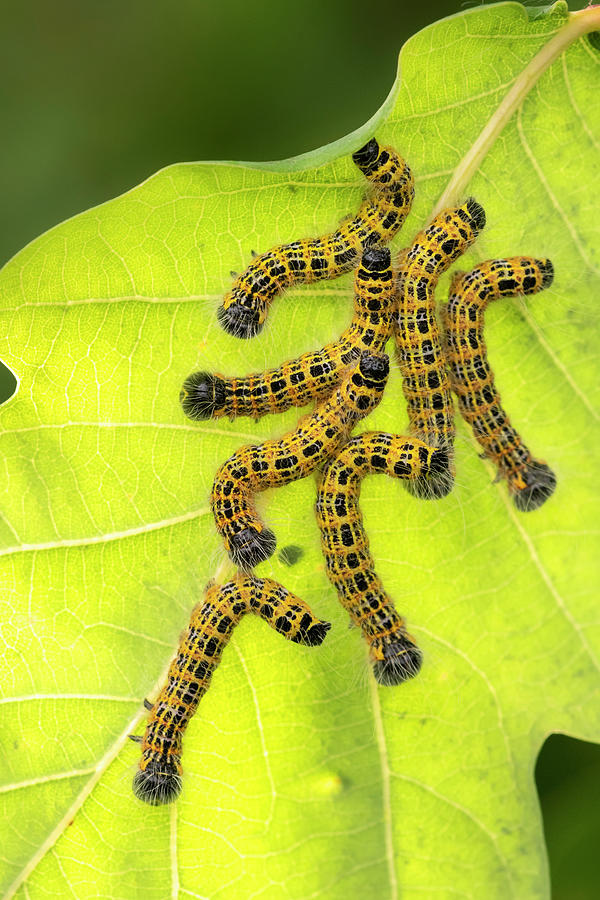
Buff Tip Moth Caterpillars Feeding On Leaf, Devon, Uk Photograph by Ross Hoddinott / Naturepl
Winter moth caterpillars eat holes in the leaves, blossom and developing fruitlets of many tree fruits, ornamental trees and shrubs in early spring. Severe attacks can weaken young trees. Extensive damage to fruit trees can affect crop yield and quality. Winter moth is a name that can be used for a number of species that have adult moths that.
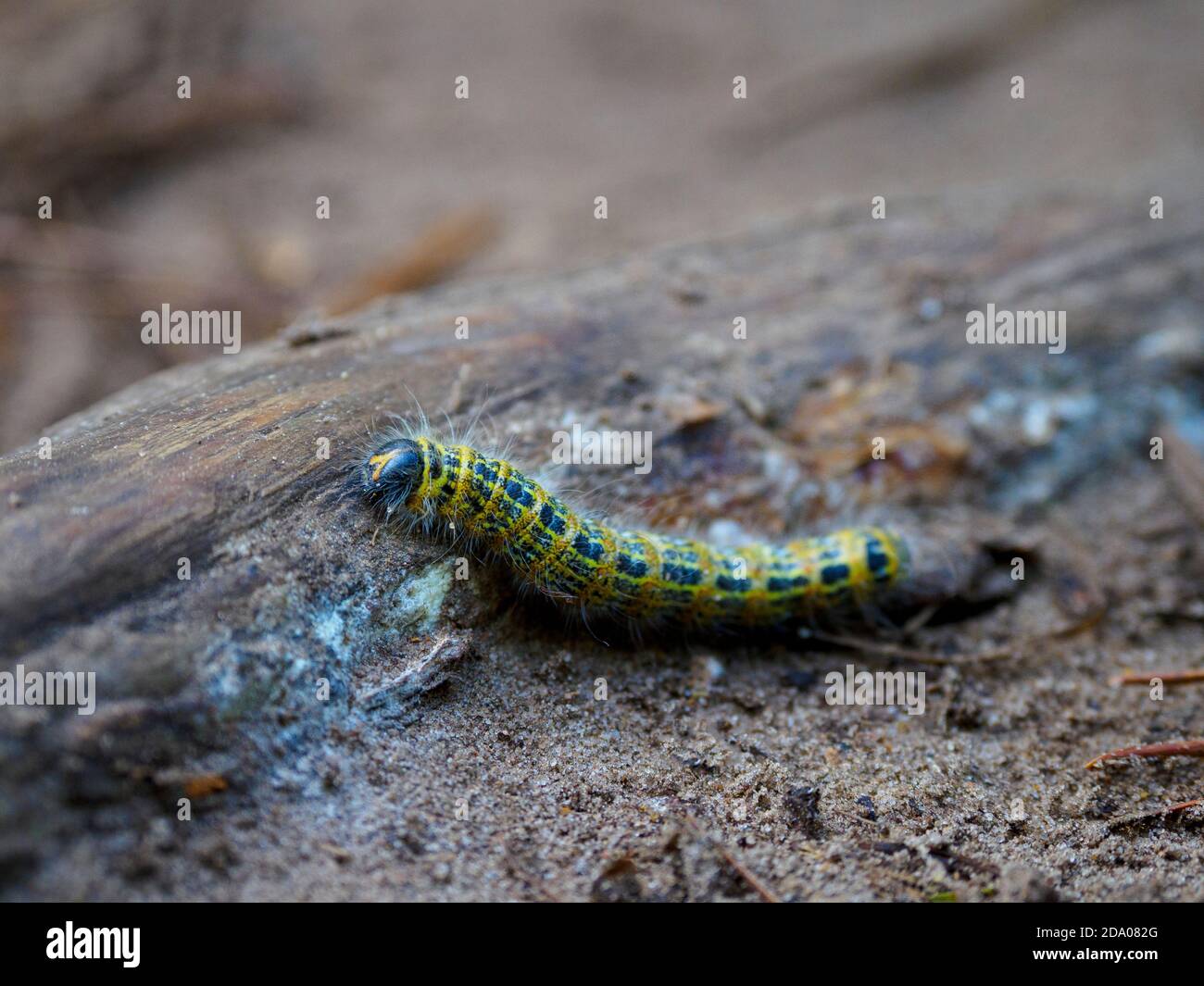
Bufftip moth caterpillar, Norfolk, UK Stock Photo Alamy
Amongst over 2,600 different moth species of all shapes, sizes, colours and designs there is one moth, the Buff-tip, that once seen is rarely forgotten. Latest Buff-tip life cycle page with eggs, caterpillar and pupa. During public moth events the Buff-tip never fails to receive the most gasps of astonishment from audiences.

Buff tip moth (Phalera bucephala) caterpillar. Sussex, England, UK. July Stock Photo Alamy
Buff-tip Phalera bucephala (Linnaeus, 1758) Wingspan 42-55 mm.. and quite common, especially in the southern half. The yellow-and-black caterpillars live gregariously and feed on a number of different deciduous trees, sometimes defoliating entire branches. The adults fly in June and July, frequenting mixed woodland.. Moth Books. Common.
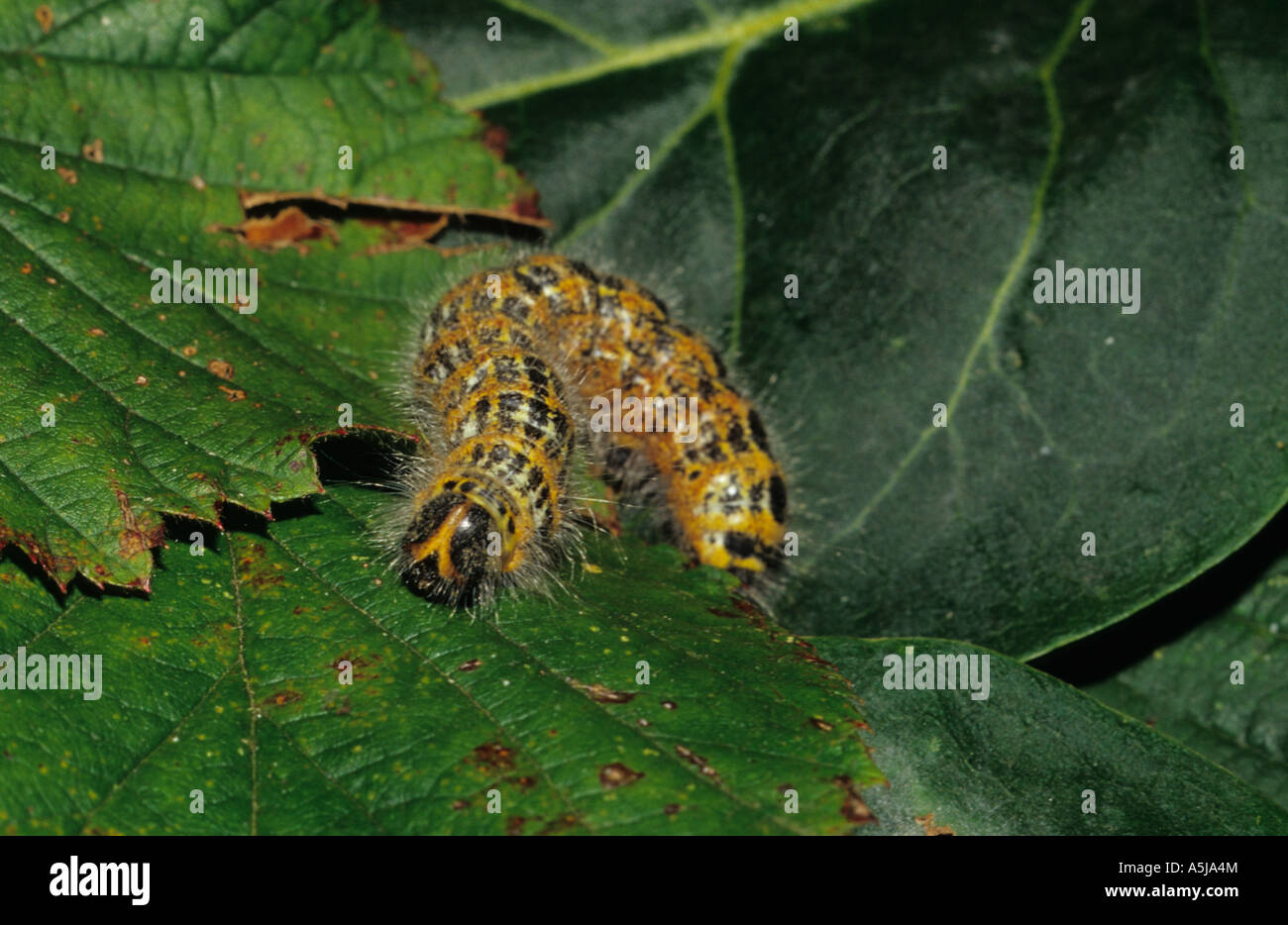
Buff Tip Moth Caterpillar (Phalera bucephala) in the uk Stock Photo Alamy
Symptoms. The caterpillars of this moth can be found feeding on plants at all times of the year but are most common between May and October. Holes are eaten in the foliage and flowers of a wide range of plants, including unopened flower buds, frequent hosts include chrysanthemums, red valerian and barberry ; Young growth at the shoot tips is particularly favoured
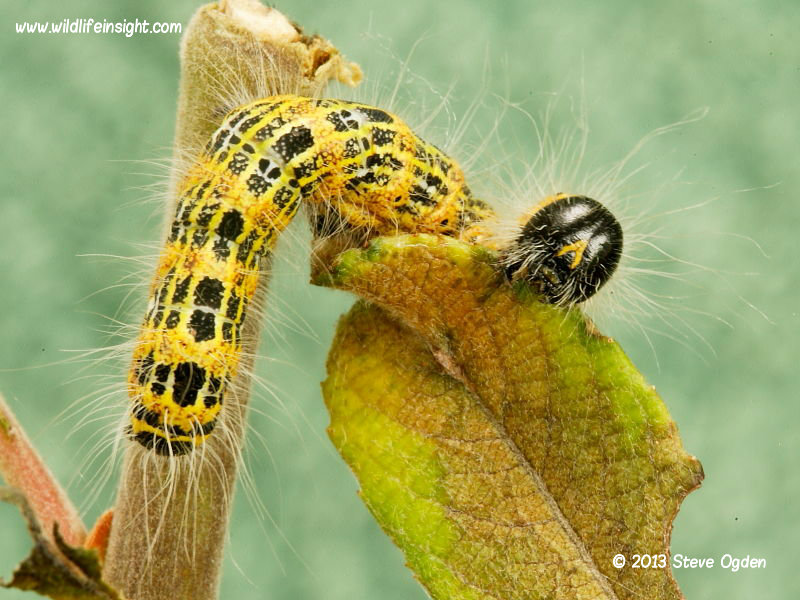
Bufftip Moth and caterpillar (Phalera bucephala)
• Buff ErmineLarger moths tend to come out later in the summer than many smaller moths. Try setting ent. UK Moths www.ukmoths.org.uk The National Moth Recording Scheme www.mothscount.org Wild About Gardens www.wildaboutgardens.org.uk Tips for looking for moths and caterpillars etty moth that om y and will often visit wn caterpillars
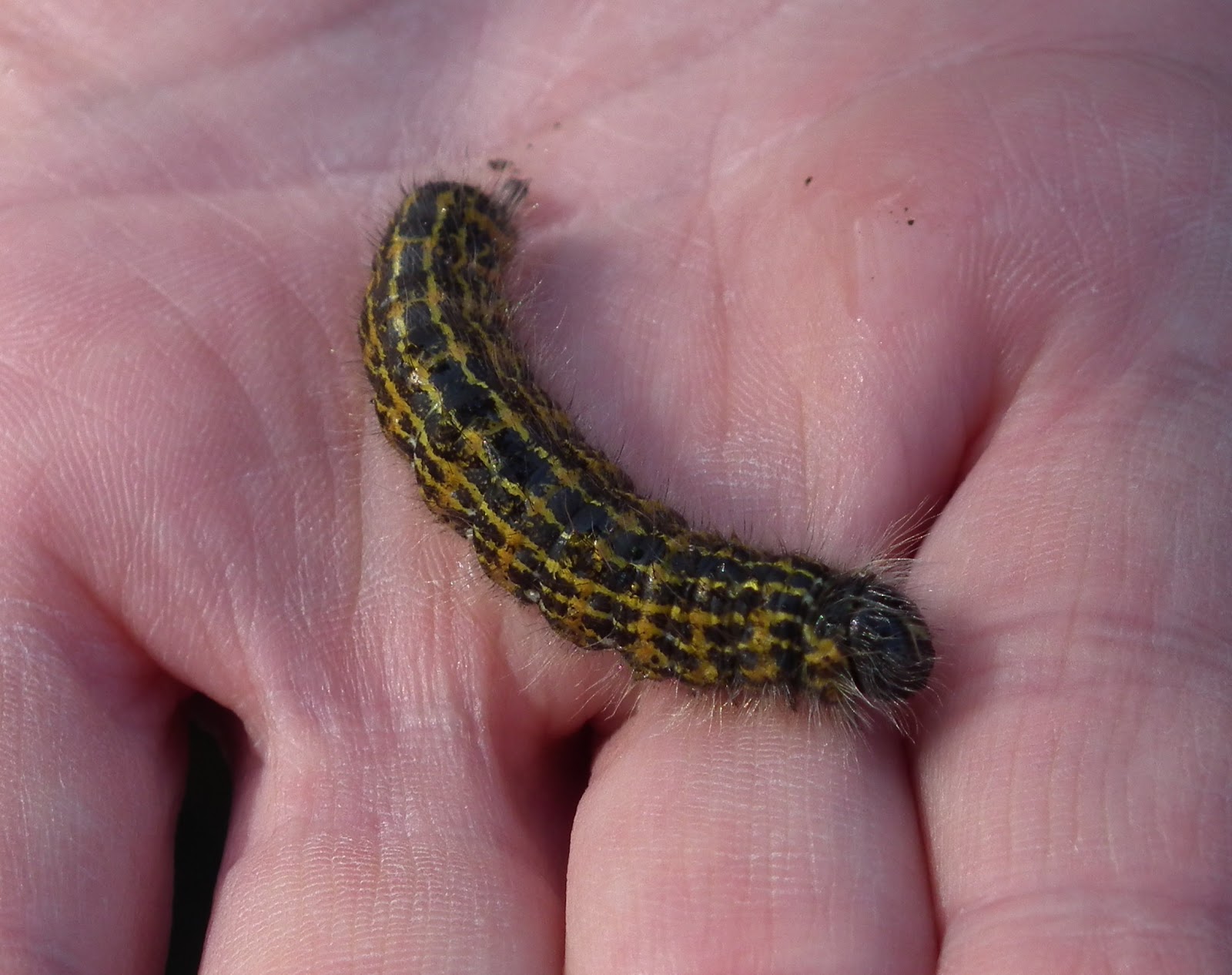
The Hairy Birder Buff Tip Moth Caterpillars
The oak processionary moth first reached the UK in the early 2000s, becoming established in 2005 and 2006. It is believed that the caterpillars were imported as part of the plant trade, probably being carried on oak trees brought to the UK from southern Europe. After first arriving in London, the caterpillars have spread to the surrounding.

Buff Tip Moth Caterpillars Flickr Photo Sharing!
When at rest, the wings are held almost vertically against the body with two buff areas at the front of the thorax and at the tips of the forewings which look very like the pale wood of the birch. The rest of the wings are the same mottled grey colour of the birch bark. Occasionally the adults can be found resting in the day on a twig or the ground. They fly at night and comes to light.